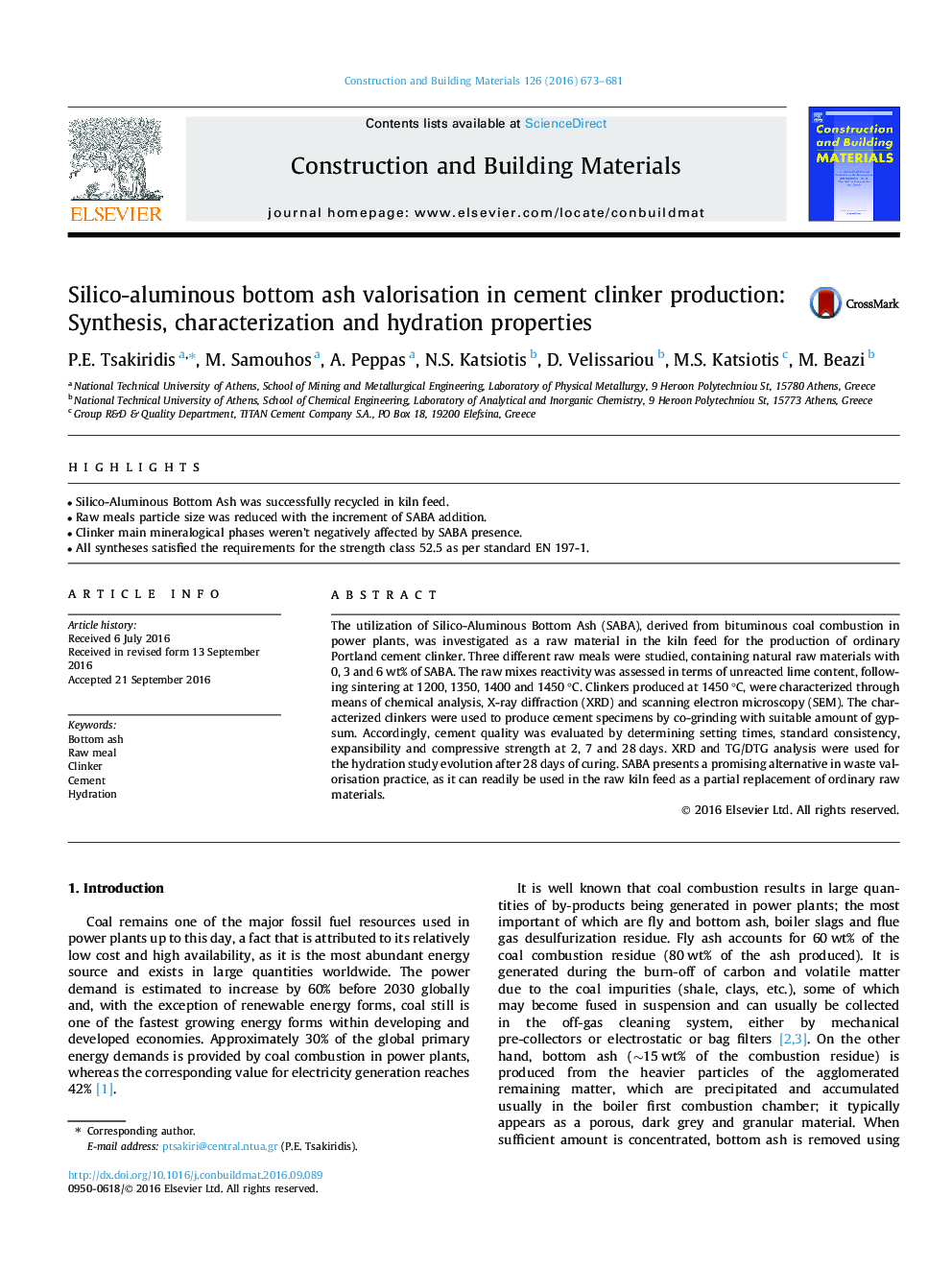| Article ID | Journal | Published Year | Pages | File Type |
|---|---|---|---|---|
| 6480950 | Construction and Building Materials | 2016 | 9 Pages |
â¢Silico-Aluminous Bottom Ash was successfully recycled in kiln feed.â¢Raw meals particle size was reduced with the increment of SABA addition.â¢Clinker main mineralogical phases weren't negatively affected by SABA presence.â¢All syntheses satisfied the requirements for the strength class 52.5 as per standard EN 197-1.
The utilization of Silico-Aluminous Bottom Ash (SABA), derived from bituminous coal combustion in power plants, was investigated as a raw material in the kiln feed for the production of ordinary Portland cement clinker. Three different raw meals were studied, containing natural raw materials with 0, 3 and 6 wt% of SABA. The raw mixes reactivity was assessed in terms of unreacted lime content, following sintering at 1200, 1350, 1400 and 1450 °C. Clinkers produced at 1450 °C, were characterized through means of chemical analysis, X-ray diffraction (XRD) and scanning electron microscopy (SEM). The characterized clinkers were used to produce cement specimens by co-grinding with suitable amount of gypsum. Accordingly, cement quality was evaluated by determining setting times, standard consistency, expansibility and compressive strength at 2, 7 and 28 days. XRD and TG/DTG analysis were used for the hydration study evolution after 28 days of curing. SABA presents a promising alternative in waste valorisation practice, as it can readily be used in the raw kiln feed as a partial replacement of ordinary raw materials.
